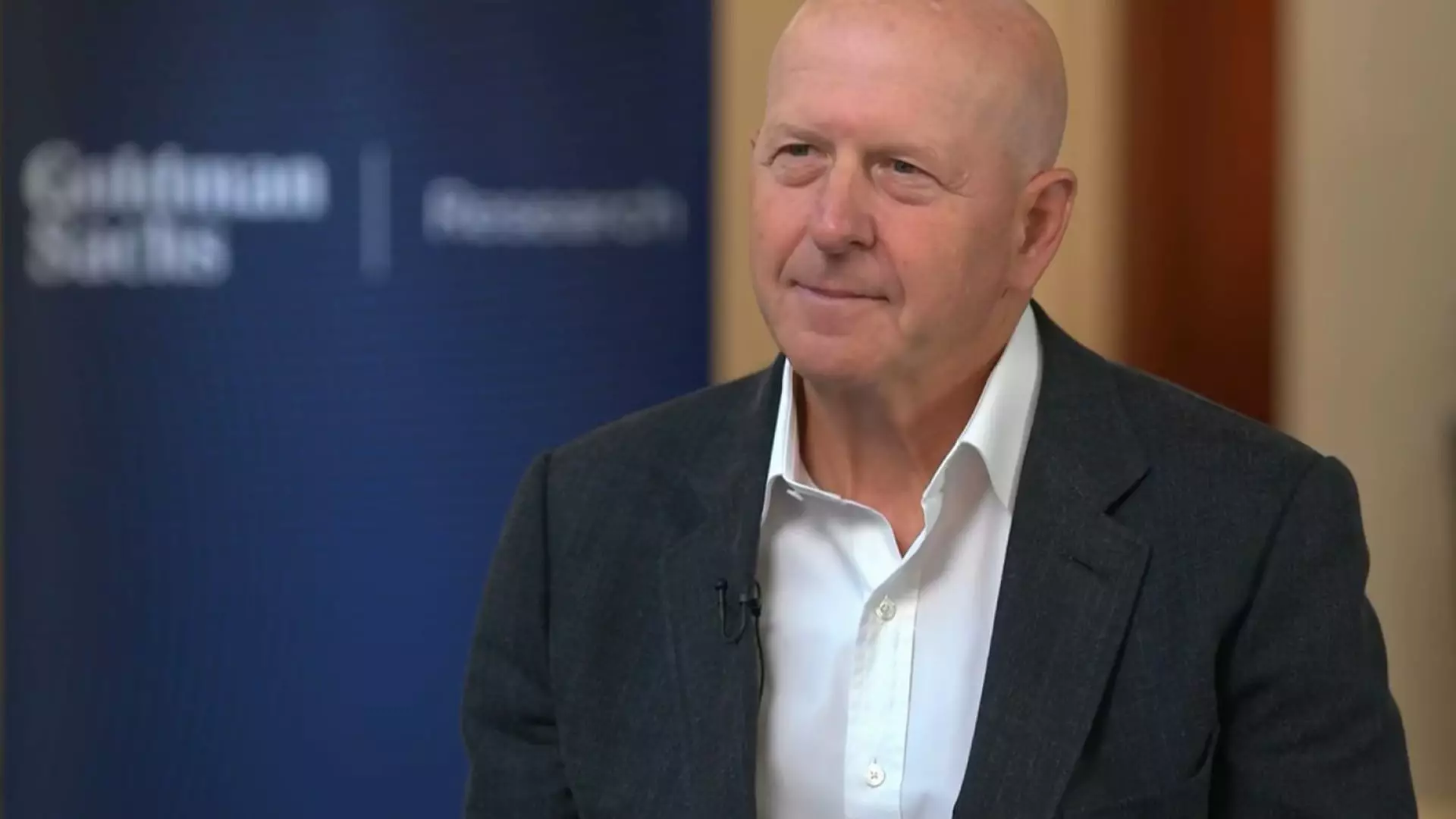Goldman Sachs Surges 15% Amid Growing Trade Tensions: 5 Key Insights

Goldman Sachs recently startled the financial community by reporting a remarkable 15% profit increase in the first quarter, striking a chord with investors and analysts alike. The earnings of $14.12 per share greatly surpassed the predicted $12.35, while total revenue of $15.06 billion also eclipsed the estimated $14.81 billion. These figures indicate a resilient performance from the investment bank amid a turbulent global economic climate, primarily influenced by rising trade tensions introduced by President Donald Trump.
However, one must question whether such encouraging results are merely a temporary blip or part of a new status quo for Goldman Sachs. The 6% revenue growth against a backdrop of increasing volatility suggests a strategic pivot aimed at harnessing changing market dynamics. As market forecasts continue to darken with every new tariff mentioned, it’s crucial to ponder how sustainable these earnings truly are under continued political strain.
Equities Trading: A Silver Lining Drowning in Complexity
The real star of Goldman’s performance was its equities trading sector, which astonishingly climbed by 27%, earning $4.19 billion—$540 million beyond what analysts were nudging for. This bolstering in equities trading revenue starkly contrasts with underwhelming results in fixed income and investment banking, which saw falls amid broader market inconsistencies. Is Goldman Sachs riding the wave of equities trading as a safe haven while other divisions lag behind?
The firm’s global banking found a 10% revenue boost thanks to this equities trading surge; however, the stagnant performances in other divisions demonstrate that this is a one-sided recovery. Indeed, while equities trading surged, other more traditional revenue streams suffered, raising the question of whether Goldman and its peers are shifting to a more volatile business model that is heavily dependent on trading performance rather than foundational advisory services.
Concerns Around Asset Management Decline
The asset and wealth management sector, which traditionally serves as a robust anchor during financial storms, reported a concerning 3% revenue decline to $3.68 billion, falling below analyst expectations. Such declines signal waning client confidence and raise alarming red flags about the stability of Goldman’s client portfolios in an increasingly uncertain economic landscape.
Solomon’s acknowledgment of “significantly lower” revenue from private equity and public market investments exemplifies a larger trend towards caution from high-net-worth individuals and institutions, likely influenced by the erratic nature of the current U.S. administration’s trade policies. The disconnect in performance between equities trading and wealth management suggests that while certain high-flying segments may thrive, others remain vulnerable to both macroeconomic shifts and the whims of political discourse.
Market Ripples and Competitive Landscape
Goldman Sachs shares experienced a premarket rise of over 3%, a flicker of optimism shared by the broader market amidst uncertainty. However, analysts are watching closely, especially as rival firms such as JPMorgan Chase and Morgan Stanley reported profits driven significantly by the same equity trading fervor.
The juxtaposition with its competitors, who experienced equity trading revenue surging by 48% and 45% respectively, paints a volatile picture in the financial sector. It suggests that even if Goldman thrives now, maintaining such an upward trajectory could be hindered by increased competition and market volatility that the Trump administration’s policies have exacerbated.
Furthermore, with Goldman’s stocks falling by 14% this year, other investors may hesitate to rely solely on trading volatility as a key performance indicator moving forward. The question remains: Is Goldman’s success a harbinger of recovery or simply a stopgap maneuver in turbulent waters?
Leadership Under Pressure: Insights from Solomon
Goldman CEO David Solomon’s remarks hint at the complexities facing the firm. While he expresses confidence in the bank’s ability to navigate these challenging times, the uncertainty introduced by heightened trade tensions poses significant risk factors. Solomon’s comments might resonate with many investors wary of the volatile and unpredictable environment cultivated by shifting political landscapes.
As trade dispute narratives flip-flop and the political arena casts a looming shadow, one must question whether Solomon’s optimism is justified or merely a necessary front to keep investor confidence afloat. For Goldman Sachs, the road ahead may require more than traditional banking strategies; it may demand agility, foresightedness, and an exceptional ability to adapt in an increasingly unpredictable global economy.





